There are a few Essential Tools For Toolbox should have. A hammer is the most common and versatile tool, and is used for everything from driving nails to prying boards apart. A screwdriver is another essential tool, and is used for tightening and loosening screws.
A tape measure is also essential, and is used for measuring distance and determining the size of boards and other materials. A saw is also an essential tool, and is used for cutting wood and other materials. Finally, a level is an essential tool for making sure that boards and other materials are level and even.
If you’re a homeowner, you know that having a trusty toolbox on hand is essential for tackling a variety of tasks, both big and small. But what exactly should you keep in your toolbox? In this article, we’ll go over some essential tools that every toolbox should have.
First and foremost, you’ll need a good set of basic hand tools, including a hammer, screwdriver, and pliers. These will come in handy for a variety of tasks, such as hanging pictures, tightening screws, and gripping objects.
You’ll also want to make sure you have a few power tools in your toolbox, such as a drill and a saw. These will come in handy for larger projects, such as drilling holes for new shelving or cutting lumber for a deck.
Finally, don’t forget to stock your toolbox with a few other essentials, such as screws, nails, and a tape measure. With these tools on hand, you’ll be prepared for just about any repair or home improvement project that comes your way.
How To Assemble The Perfect Toolbox ?
Any good carpenter will tell you that having the right tools for the job is critical to getting the job done well. The same can be said for working on your car. Having a well-stocked and organized toolbox will make working on your car much easier and less frustrating. Here are some tips for assembling the perfect toolbox for your car.
Start with the basics. You will need a good set of socket wrenches, a set of screwdrivers, and a set of pliers. These are the tools that you will use most often when working on your car. If you can, get a socket set that has both metric and standard sizes. This will come in handy if you ever need to order parts from overseas.
Next, add in some specialty tools. These are the tools that you will use less often, but are still important to have. A good set of torque wrenches is a must for any car enthusiast. You will also need a set of Allen wrenches, as well as a set of wrenches for working on fuel lines.
Finally, add in some extras. These are the tools that you might not use every day, but are still nice to have on hand. A set of jumper cables is always a good idea. A set of ratchets is also a good idea, as well as a set of zip ties.
Once you have all of the tools that you need, it is time to start organizing them. The best way to do this is to get a toolbox that has multiple compartments. This will allow you to keep your tools separated and organized. It is also a good idea to label each compartment. This will help you to find the tool that you need quickly and easily.
Assembling the perfect toolbox for your car is not difficult. However, it is important to take the time to do it right. Having the right tools on hand will make working on your car much easier and less frustrating.
Best Way To Set Up Your Tool Box ?
If you’re looking for the best way to set up your auto toolbox, you’ve come to the right place. In this article, we’ll show you how to organize your tools so you can easily find what you need when you need it.
First, take inventory of all the tools you have. Once you know what you have, you can start sorting them into categories. For example, you might have a category for hand tools, power tools, and bodywork tools.
Next, consider how you use your tools. Do you use them regularly, or only occasionally? If you use them regularly, you’ll want to keep them within easy reach. If you only use them occasionally, you can store them further away.
Once you’ve sorted your tools into categories and considered how you use them, you can start organizing them in your toolbox. First, line the bottom of your toolbox with a layer of foam or padding. This will help protect your tools and keep them from rattling around.
Then, start filling your toolbox with the items you use most frequently. Put the items you use less often towards the back of the toolbox.
Finally, label each compartment or drawer in your toolbox so you know where everything is. This will save you time and frustration when you’re looking for a specific tool.
Following these tips will help you create an organized and efficient auto toolbox. With a little effort, you’ll be able to find the tools you need quickly and get back to work.
Essential Tools Your Toolbox needs
There are a few essential tools that every toolbox needs, regardless of what type of work you do. These are the tools that you will use most often, and they will make your work much easier and more efficient. Here are the essential tools your toolbox needs:
1. Wrenches
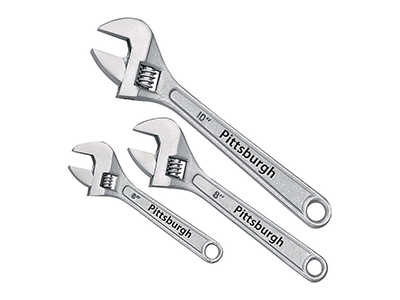
A wrench is a handheld tool used to provide grip and mechanical advantage in applying torque to turn objects—usually nuts, bolts, or pipes. Wrenches come in many shapes and sizes, and there are many types of wrenches available to suit different purposes.
There are three main types of wrenches: socket wrenches, adjustable wrenches, and open-end wrenches.
Socket wrenches are the most common type of wrench. They are available in a variety of sizes and shapes to fit different types of nuts and bolts. Most socket wrenches have a ratchet mechanism that allows them to be used to turn a nut or bolt in either direction.
Adjustable wrenches are designed to be adjustable to fit a range of nut and bolt sizes. They have a screw mechanism that allows the jaws of the wrench to be adjusted to the desired width.
Open-end wrenches have two jaws that open up to fit around a nut or bolt. They are available in a variety of sizes to fit different nut and bolt sizes.
2. Pliers

There are a few essential tools that every toolbox should have, and pliers are one of them. Pliers come in handy for a variety of tasks, from gripping and twisting wires to holding small objects in place.
There are a few different types of pliers, but the two most common are needle-nose and slip-joint. Needle-nose pliers have a long, thin nose that is ideal for reaching into tight spaces, while slip-joint pliers have a adjustable jaw that can be opened wider or narrower depending on the task at hand.
No matter what type of pliers you choose, make sure they are made of high-quality materials and have comfortable handles. You’ll be glad you have a good pair of pliers on hand the next time you need to tackle a home improvement project.
3. Screwdrivers
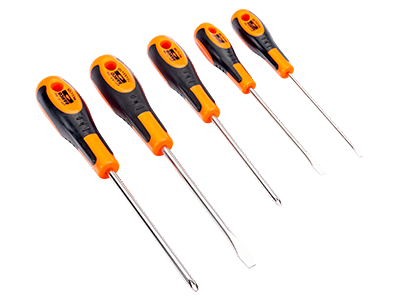
A screwdriver is a tool, manual or power-driven, used for screwing (installing) or unscrewing (removing) screws. A typical simple screwdriver has a handle and a shaft, ending in a tip that the user inserts into the screw head before turning the handle.
The first known screwdrivers were invented in the 15th century. They were called “screw-wrenches” and were used to turn screws that held together woodworking joints. In the 17th century, a type of screwdriver called a “socket screwdriver” was invented. This type of screwdriver has a socket on the end of the shaft that fits over the head of the screw.
The most common type of screwdriver today is the “flat-blade” or “flat-head” screwdriver. The tip of this type of screwdriver is a flat blade that fits into the head of the screw. The blade is turned by the handle to screw or unscrew the screw.
There are many different types and sizes of screwdrivers. The size of the screwdriver tip must match the size of the screw head. The type of screwdriver tip must match the shape of the screw head. For example, there are Phillips head screwdrivers, which have a cross-shaped tip that fits into the Phillips head screws that are common in many household appliances.
Some screwdrivers have interchangeable tips. These screwdrivers have a handle with a chuck at the end. The chuck is used to hold various tips, which can be swapped out as needed. This type of screwdriver is very versatile and can be used for many different types of screws.
There are also power-driven screwdrivers. These screwdrivers have a motor in the handle that turns the screwdriver tip. The user presses a trigger to start the motor and then guides the tip to the screw head. Power-driven screwdrivers are very useful for quickly installing or removing large screws.
Screwdrivers are an essential tool for many tasks around the home, office, or workshop. They are relatively inexpensive and can be found at most hardware stores.
4. Hammers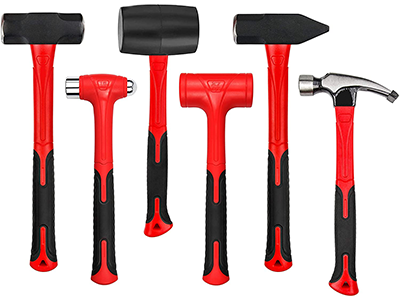
A hammer is an essential tool for any toolbox. Hammers come in a variety of sizes and styles, each designed for a specific purpose. The most common hammer is the claw hammer, which is used for general purpose pounding and pulling nails.
Other types of hammers include the ball peen hammer, used for metalworking; the sledgehammer, used for heavy pounding; and the mallet, used for delicate work. Hammers are also available with special heads, such as the magnetic head, which is used for driving nails into concrete.
No matter what type of hammer you choose, be sure to select one that is comfortable to hold and that has a head that is the appropriate size and weight for the job at hand.
5. Nails

There are a few essential tools that every toolbox should have, and nails are one of them. Nails are incredibly versatile and can be used for everything from hanging pictures to building a deck. Plus, they’re relatively inexpensive, so there’s no excuse not to have them on hand.
If you’re not sure what kind of nails to get, ask your local hardware store employee for guidance. They can help you choose the right size and type of nails for your project. And, once you have your nails, be sure to keep them organized in your toolbox so you can easily find them when you need them.
6. Screws

When it comes to screws, there are a few essential tools that you’ll need in order to get the job done right. Here’s a look at some of the most essential tools for screws, so you can be sure you have everything you need on hand before you start your next project.
First, you’ll need a screwdriver. This is an absolute must-have for any screw-related project. Make sure you have a screwdriver that is the right size and shape for the screws you’ll be using.
Next, you’ll need a drill. This is important for making holes for the screws. If you don’t have a drill, a screwdriver will do in a pinch, but it’s not ideal.
Finally, you’ll need a set of pliers. These are essential for tightening or loosening screws. Make sure you have a good pair of pliers that are the right size for the screws you’ll be using.
With these essential tools for screws, you’ll be ready to tackle any project. Be sure to have them on hand before you start so you can be sure you have everything you need.
7. Saw
There are a few essential tools that every toolbox should have. A saw is one of them. There are many different types of saws, but a few essential saws that every toolbox should have are a hand saw, a power saw, and a jigsaw. A hand saw is a great tool for making straight cuts in wood.
It is also a great tool for making curved cuts in wood. A power saw is a great tool for making straight cuts in wood, but it is also a great tool for making cuts in metal and plastic. A jigsaw is a great tool for making intricate cuts in wood and metal.
8. Drill
A drill is an essential tool for any toolbox. It is a versatile tool that can be used for a variety of tasks, such as drilling holes, driving screws, and even sanding.
There are a few things to keep in mind when choosing a drill. First, consider the power source. There are corded drills and cordless drills. Cordless drills are more convenient, but they require batteries that need to be regularly charged. Second, think about the size of the drill. A larger drill can obviously drill larger holes, but it may be more difficult to handle. Third, consider the features that you want. Some drills have a built-in light, for example, which can be helpful when working in dark spaces.
Once you have a drill, there are a few essential accessories that you should get. First, get a drill bit set. This will allow you to drill different sized holes. Second, get a screwdriver bit. This will allow you to use your drill to drive screws. Third, get a sanding attachment. This will allow you to use your drill to sand surfaces.
With a drill and these essential accessories, you’ll be able to tackle a variety of tasks around the house.
9. Level
A hammer is an essential tool for driving nails into wood and other materials. It can also be used to pry nails out of wood.
Screwdrivers are essential for driving screws into wood and other materials. They come in a variety of sizes and shapes to fit different screw heads.
A level is an essential tool for making sure that surfaces are level. This is important when hanging pictures or shelves, or when doing any type of construction work.
A tape measure is an essential tool for measuring distances. This is important when measuring for furniture, or when measuring for construction projects.
Pliers are an essential tool for gripping and holding objects. They can also be used to cut wire and other materials.
10. Tape measure
A tape measure is one of the most essential tools for your toolbox. It is a versatile tool that can be used for a variety of tasks, such as measuring the length of a board or the width of a door opening.
There are a few things to keep in mind when shopping for a tape measure. First, consider the length of the tape measure. Most tape measures are about 25 feet long, but longer tapes are available for larger projects. Second, pay attention to the tape measure’s markings. The markings should be clear and easy to read. Finally, make sure the tape measure has a locking mechanism to keep the tape from retracting unexpectedly.
11. Stud Finder
When it comes to finding studs in your walls, there are a few essential tools that you’ll need in order to get the job done right. Firstly, you’ll need a good quality stud finder. These devices use either magnetic or electronic sensors to detect the presence of studs behind your walls, and can be a lifesaver when it comes to hanging heavy objects or drilling holes.
Another essential tool for finding studs is a tape measure. This will come in handy for measuring the distance between studs, as well as the width of the stud itself. If you’re working in a large area, it might also be helpful to have a laser level on hand to ensure that your measurements are accurate.
Finally, you’ll need a pencil and some sort of marking device to indicate where the studs are once you’ve found them. This could be a simple piece of masking tape or a more permanent solution like a piece of chalk.
With these essential tools in your toolbox, finding studs in your walls will be a breeze!
12. Chalk line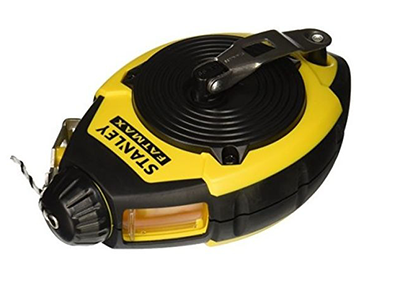
A chalk line is a vital tool for any toolbox. It is used to create a temporary line on any surface, which can be used as a guide for cutting, measuring, or other tasks.
There are a few different types of chalk line available, but the most common is the string chalk line. This consists of a string that is coated in chalk powder, which is then stretched out between two points. When the string is released, it will snap back into place, leaving a straight chalk line behind.
Chalk lines are available in different lengths, depending on the size of the area you need to mark out. They can also be bought in different colours, although blue is the most popular.
To use a chalk line, simply tie one end of the string around a nail or other point of anchor. Stretch the string out to the other point you wish to mark, then release it. The string will snap back into place, leaving a straight chalk line behind.
If you need to make a longer chalk line, you can do so by joining two pieces of string together. Alternatively, you can buy a reel of chalk line, which will give you a much longer line in one go.
Once you have finished using your chalk line, simply brush away the excess chalk powder with a brush or cloth. If the line is particularly long, you may need to vacuum it up.
13. Square

One of the most essential tools that every homeowner should have in their toolbox is a square. A square is a simple tool that can be used for a variety of tasks, such as measuring angles, marking lines, and checking for level surfaces. If you don’t already have a square, be sure to pick one up the next time you’re at the hardware store.
14. Safety glasses
Most people associate safety glasses with construction workers or other manual labor professions. However, anyone who uses tools regularly should wear them. That’s because flying debris from power tools can cause serious eye injuries.
So if you’re someone who likes to work with your hands, make sure you have a good pair of safety glasses. They could save your vision.
15. Dust mask
No matter what kind of work you do, there are always going to be times when you need to protect your lungs from harmful airborne particles. That’s why a good dust mask is an essential tool for anyone who works with tools.
A dust mask is a simple piece of equipment that can make a big difference in your safety. It’s a must-have for anyone who uses power tools, grinders, or other equipment that produces dust. A dust mask filters out the harmful particles in the air and makes it easier to breathe.
There are many different types of dust masks available on the market, so it’s important to choose one that’s right for you. If you’re doing light work, such as sanding or sweeping, a disposable paper mask will do the job. For more heavy-duty work, such as grinding or using power saws, you’ll need a more durable mask that can be reused.
Whatever type of mask you choose, make sure it fits snugly over your nose and mouth and that you can breathe easily through it. A good dust mask should be comfortable to wear and not impede your work.
With a good dust mask, you can focus on your work and not worry about the harmful particles in the air. Make sure you have one of these essential tools in your toolbox.
16. Ear plugs
If you work with tools, then you know how important it is to protect your hearing. That’s why you need a good pair of ear plugs for your toolbox. With so many different types of ear plugs on the market, it can be hard to know which ones to choose. Here are a few things to look for when choosing ear plugs for your toolbox:
- Look for ear plugs that are made of soft, comfortable material. You don’t want something that’s going to hurt your ears after a long day of work.
- Make sure the ear plugs you choose fit snugly and don’t fall out easily. You don’t want to be constantly adjusting them or worrying that they’re going to fall out.
- Choose ear plugs that will block out a good amount of noise. You want to be able to still hear your tools, but you don’t want the noise to be too loud.
- Look for ear plugs that are easy to clean. You don’t want to have to worry about them getting full of dirt and grime.
With so many different ear plugs on the market, it can be hard to know which ones to choose. But if you keep these things in mind, you should be able to find a great pair of ear plugs for your toolbox.
17. Knee pads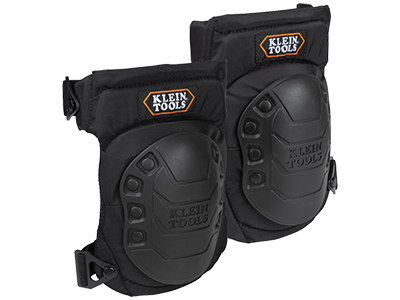
Knee pads are an essential tool for any toolbox. They protect your knees from sharp objects and rough surfaces, and they help to keep your tools in place while you work. Knee pads come in a variety of sizes, shapes, and colors, so you can find a pair that fits your needs.
18. First aid kit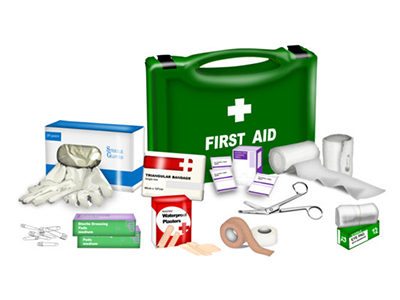
A toolbox first aid kit is an essential for any homeowner or renter. It should be stocked with the items you need to treat minor injuries and illnesses, and to keep you safe in an emergency.
The basics of a first aid kit for your toolbox should include:
- Bandages: Adhesive bandages in various sizes, gauze pads, rolled gauze, and first aid tape.
- Cleansing agents: Antiseptic wipes, hydrogen peroxide, and alcohol-based hand sanitizer.
- Pain relief: Aspirin, ibuprofen, and acetaminophen.
- Allergy relief: Antihistamines and epinephrine injector (EpiPen).
- -Tools: Scissors, tweezers, and a magnifying glass.
- Miscellaneous: A thermometer, emergency whistle, and CPR mask.
19. Flashlight
A flashlight is an essential tool for every toolbox. It is a handy tool that comes in handy during power outages, camping trips and other outdoor adventures. A flashlight can also be used to light up a dark space in your home or garage. There are many different types and sizes of flashlights available on the market, so it is important to choose the right one for your needs.
The most common type of flashlight is the hand-held flashlight. These flashlights are small and easy to carry, making them ideal for emergencies. Hand-held flashlights are also great for using around the house for tasks such as finding a lost item in the dark.
Another popular type of flashlight is the headlamp. Headlamps are worn on the head and provide hands-free lighting. This makes them perfect for activities such as hiking, camping and spelunking. Headlamps are also a good choice for mechanics and other professionals who need to keep both hands free while working.
LED flashlights are becoming increasingly popular due to their long battery life and bright light. LED flashlights are more expensive than traditional incandescent flashlights, but they will last much longer and use less battery power.
There are also solar-powered flashlights available. Solar-powered flashlights are environmentally friendly and can be charged by sunlight. Solar flashlights are a good choice for those who want to be prepared for power outages or other emergencies.
When choosing a flashlight, it is important to consider the size, weight and brightness. You will also want to decide if you want a hand-held flashlight or a headlamp. Once you have decided on the type of flashlight you need, you can shop around for the best price.
20. Cordless drill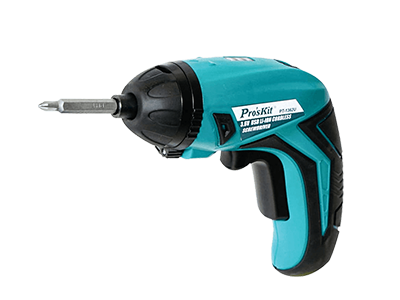
A cordless drill is an essential tool for any toolbox. It is a versatile tool that can be used for a variety of tasks, from drilling holes to driving screws. A cordless drill is a must-have for any homeowner or DIYer.
There are a few things to consider when choosing a cordless drill. First, consider the battery type. Lithium-ion batteries are the best choice, as they are lightweight and have a long lifespan. Second, consider the power. A higher voltage will allow you to drill through tougher materials. Third, consider the size. A smaller drill will be easier to handle, but a larger drill will have more power. Finally, consider the price. A higher-priced drill will usually have more features and be of better quality.
Once you have considered these factors, you are ready to choose the best cordless drill for your needs.
21. Jigsaw
A jigsaw is a type of saw that is used to cut curves and shapes. It is a versatile tool that can be used for a variety of projects.
There are a few essential tools that you will need in order to use a jigsaw. First, you will need a jigsaw blade. There are many different types of blades available, so you will need to select the right one for your project. Second, you will need a clamps to hold the workpiece in place. Third, you will need a straight edge to guide the blade. Finally, you will need a dust mask to protect your lungs from the sawdust.
With these essential tools, you will be able to complete any project you set out to do with your jigsaw.
22. Circular saw
In any well-equipped workshop, a circular saw is an essential tool. It’s a versatile tool that can be used for a variety of tasks, from making long, straight cuts in lumber to cutting curves in sheet goods.
There are a few things to consider when choosing a circular saw, such as the size of the blade, the power of the motor, and the type of handle. The size of the blade is determined by the diameter of the blade, and the power of the motor is determined by the voltage. The type of handle is a matter of personal preference.
The most important thing to consider when using a circular saw is safety. Always wear eye protection and use the saw with the blade guard in place. When making cuts, be sure to keep your fingers clear of the blade.
23. Router
Router is a very important tool for any carpenter or woodworker. It is used to create intricate designs and shapes on wood. Without a router, many of the pieces of furniture and other wood products that we enjoy today would not be possible.
There are many different types of routers available on the market, but they all essentially perform the same function. The most important thing to consider when purchasing a router is the size and power of the motor. You will also want to consider the type of bits that you will need for the types of projects that you plan to use it for.
If you are a beginner, you may want to purchase a router that comes with a set of bits. This will give you a chance to try out different bits and see which ones you like best. You can also purchase router bits separately. The most common bits are straight bits, rabbeting bits, and flush-trim bits.
Once you have a router, you will need to learn how to use it properly. There are many books and websites that can provide you with information on how to use a router. You can also find videos online that will show you how to use a router.
24. Sandpaper
If you’re looking for a way to make your tools last longer, consider using sandpaper. Sandpaper will help to keep your tools clean and free of rust. It’s also a good way to protect your tools from the elements.
When using sandpaper, be sure to choose the right grit for the job. A higher grit will be better for removing rust, while a lower grit will be better for protecting your tools.
Be sure to sand in a well-ventilated area, and wear a dust mask to avoid inhaling any particles.
Sandpaper is an essential tool for any toolbox. With it, you can keep your tools clean, free of rust, and protected from the elements.
25. Paint
Paint is one of the most versatile and essential tools in any toolbox. It can be used for a wide variety of projects, from touch-ups around the house to major renovations. But with so many different types and brands of paint on the market, it can be daunting to try to choose the right one for your project. Here are a few tips to help you select the best paint for the job:
- Know the different types of paint. There are four main types of paint: latex, oil-based, enamel, and alkyd. Each has its own advantages and disadvantages, so it’s important to choose the right type for your project.
- Consider the surface you’re painting. The type of paint you’ll need will depend on the surface you’re painting. For example, latex paint is best for most walls, while oil-based paint is better for trim and cabinets.
- Determine the right sheen. The sheen of a paint refers to how glossy it is. The most common sheens are flat, eggshell, satin, semi-gloss, and high-gloss. Flat paint has no shine, while high-gloss paint is very shiny. Choose the sheen based on the look you want and the amount of traffic in the area you’re painting.
- Read the labels. Paint labels will tell you a lot about the product, including the type of paint, the sheen, the coverage, and the drying time. This information can be helpful in choosing the right paint for your project.
- Ask for help. If you’re still not sure which paint to choose, don’t hesitate to ask for help at your local hardware store or home improvement store. The experts there can help you select the best paint for your project.
26. Brushes
A good set of brushes is essential for any toolbox. Here are some of the different types of brushes you may need:
- Paintbrushes: Paintbrushes come in different sizes and shapes, and are used for painting.
- Wire brushes: Wire brushes are used for cleaning and scrubbing. They come in different sizes and shapes, and have different types of bristles.
- Scrub brushes: Scrub brushes are used for scrubbing surfaces. They have stiff bristles and are usually round or oval in shape.
- Toothbrushes: Toothbrushes are used for cleaning teeth. They have soft bristles and are usually small in size.
- Nail brushes: Nail brushes are used for cleaning nails. They have soft bristles and are usually small in size.
- Brushes come in different sizes, shapes, and bristles. Choose the right brush for the job you need to do.
27. Roller
A roller tool is an essential tool for any toolbox. It is perfect for rolling out dough, pasta, and fondant. It is also great for flattening large pieces of paper or fabric. The roller tool is made of durable plastic and has a comfortable grip. It is also dishwasher safe.
28. Pan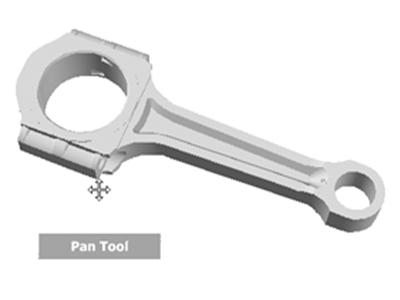
If you’re looking for a versatile tool that can help you with a variety of tasks, look no further than the pan tool. From moving objects around to selecting and cropping images, the pan tool is an essential tool for any toolbox.
29. Drop cloth
A drop cloth is an essential tool for any painter, as it helps to protect surfaces from paint drips and splatters. It is also useful for protecting carpets and floors when painting or staining.
30. Caulking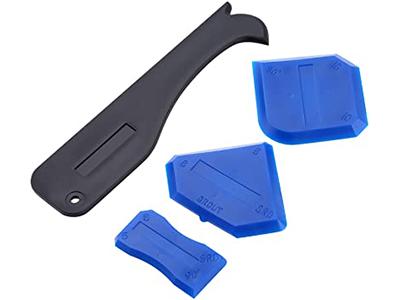
Caulking is an important tool for any toolbox. It is used to seal cracks and gaps in surfaces, preventing water and air from entering. Caulking can be made from a variety of materials, including silicone, latex, and acrylic. It is important to choose the right type of caulking for the job, as some are better suited for certain tasks than others.
latex and acrylic caulks are best for smaller gaps and cracks, while silicone caulks are better for larger gaps and cracks.
Applying caulking is relatively simple, but there are a few things to keep in mind. First, make sure the surface is clean and dry before applying the caulking. Second, cut the tip of the caulking tube at a 45-degree angle to ensure a smooth application. Finally, smooth the caulking with a wet finger or a damp cloth to create a nice, even seal.
31. Hammer Drill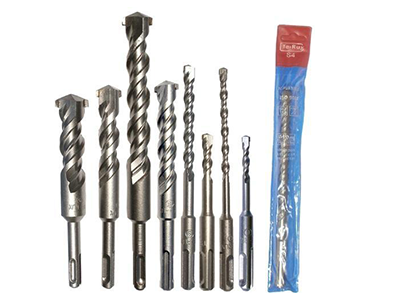
A hammer drill is an essential tool for any toolbox. It is a power tool that uses a hammering action to drill holes in materials such as wood, metal, or concrete.
Hammer drills are available in corded and cordless versions. Corded versions are more powerful but require a power outlet, while cordless versions are more convenient but require batteries.
When choosing a hammer drill, consider the material you will be drilling into, the size of the holes you need to drill, and the power source you will be using.
32. Nail Gun
A nail gun is an essential tool for any toolbox. It is a fast and easy way to drive nails into wood, and it can be used for a variety of applications. Nail guns are available in a variety of sizes and styles, and they can be used with a variety of different nails.
33. Air compressor
An air compressor is an essential tool for any toolbox. It is a versatile tool that can be used for a variety of tasks, such as inflating tires, powering air tools, and cleaning surfaces. Air compressors come in a variety of sizes and styles, so it is important to choose one that is best suited for the tasks you will be using it for.
There are two main types of air compressors: portable and stationary. Portable air compressors are small and can be easily carried around, making them ideal for use in small spaces. Stationary air compressors are larger and more powerful, making them suited for more heavy-duty tasks.
When choosing an air compressor, it is important to consider the CFM (cubic feet per minute) rating. This is a measure of how much air the compressor can output per minute. The higher the CFM rating, the more powerful the air compressor.
Another important consideration is the PSI (pounds per square inch) rating. This is a measure of how much pressure the air compressor can generate. Higher PSI ratings are ideal for tasks that require more power, such as inflating tires.
Air compressors can be powered by electricity, gas, or a diesel engine. Electric air compressors are the most common type, as they are less expensive and easier to operate than gas or diesel models. However, gas and diesel models are more powerful and can be used in areas where there is no electricity available.
When using an air compressor, it is important to wear safety goggles to protect your eyes from flying debris. Additionally, it is important to read the owner’s manual carefully before operating the air compressor, as there are a variety of safety precautions that need to be followed.
34. Utility Knife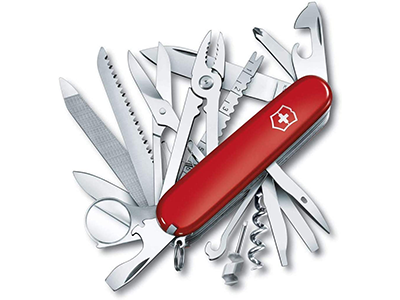
A utility knife is one of the most essential tools that you can have in your toolbox. It is a versatile tool that can be used for a variety of tasks, such as opening boxes, cutting rope, and slicing through materials.
A utility knife typically has a retractable blade that can be locked in place when not in use. This is a safety feature that prevents the blade from accidentally deploying and injuring you or someone else.
When choosing a utility knife, look for one that is comfortable to hold and that has a blade that is easy to deploy and retract. You should also consider the type of blade that you want. Some utility knives have a fixed blade, while others have a replaceable blade.
If you are going to be using your utility knife for a lot of heavy-duty tasks, then you may want to consider a model that has a stronger blade. For lighter tasks, a utility knife with a replaceable blade may be a better option.
No matter what type of utility knife you choose, it is an essential tool that should be in every toolbox.
35. Staples
A good quality Staples tool is a great investment for anyone who wants to be able to complete a variety of tasks around the house or office. With its many features and attachments, it can be used for everything from light duty tasks like hanging pictures to more heavy duty jobs like sanding and drilling.
36. Ratchet
One of the most essential tools for any toolbox is a good ratchet. Ratchets are perfect for those tight spaces and for quickly loosening or tightening bolts. But with so many different ratchets on the market, it can be hard to know which one is the best for your needs. Here is a look at some of the best ratchets on the market, perfect for any toolbox.
The first ratchet on our list is the Stanley 92-824 Black Chrome and Laser Etched Socket Ratchet. This ratchet has a black chrome finish that is corrosion resistant. It also has a laser etched scale that is easy to read. The Stanley ratchet also has a low profile head that makes it perfect for those tight spaces.
Next on our list is the Craftsman Evolv 3/8-Inch Ratchet. This ratchet has a comfortable grip that makes it easy to use. It also has a quick release button that makes it easy to change sockets. The Craftsman ratchet also has a full polish chrome finish that is corrosion resistant.
The last ratchet on our list is the Dewalt DWMT73803 AirRatchet. This ratchet is perfect for those who need a little extra power. It has a maximum torque of 30 ft-lbs and a free speed of 160 RPM. The Dewalt ratchet also has a textured grip that makes it easy to hold onto.
37. Air hose
An air hose is an essential tool for any toolbox. It is used to connect air tools to an air compressor. Air hoses come in different sizes, lengths and materials. You should choose an air hose that is compatible with the air tools you plan to use.
38. Tool belt
A tool belt can be very helpful for keeping your tools organized and within easy reach. If you are working on a project that requires a lot of different tools, a tool belt will save you a lot of time.
39. Work gloves
One of the most essential tools for your toolbox is a good pair of work gloves. Your hands are your most important tool, and they need to be protected from cuts, scrapes, and other injuries. Work gloves also help to keep your hands clean and free of dirt and grime.
40. Hard hat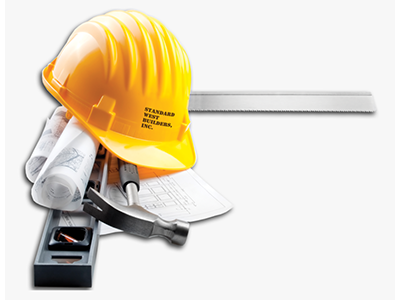
A hard hat is an essential piece of safety equipment for anyone working on a construction site. It helps protect your head from falling debris and other potential hazards. If you’re working on a construction project, be sure to wear a hard hat at all times.
41. Steel toed boots
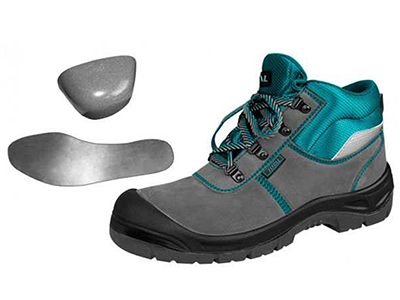
If you work in construction, or any kind of job where you’re using power tools, it’s essential that you have a good pair of steel-toed boots. These boots will protect your feet from being injured by falling objects or by having something heavy land on them. They’ll also protect you from being cut by sharp tools.
A good pair of work gloves is also essential. These gloves will protect your hands from being cut or injured by sharp tools. They’ll also keep your hands clean and help you grip tools and materials more securely.
A dust mask is also a good idea, to protect your lungs from harmful particles that can be kicked up by power tools.
Of course, you’ll also need a tool box to keep all of your essential tools in. Make sure it’s big enough to hold everything you need, and that it has a good, sturdy handle so you can easily carry it around.
42. Taps and Dies
Taps and dies are essential for any toolbox. They are used to create internal and external threads, and can be used on a variety of materials including metals, plastics, and wood.
Taps are used to create internal threads, and come in a variety of sizes and styles. The most common type of tap is the taper tap, which is used to create threads in a hole that is already drilled. It has a tapered tip that gradually enlarges the hole as it is turned.
Dies are used to create external threads, and are also available in a variety of sizes and styles. The most common type of die is the round die, which is used to create threads on a rod or other cylindrical object. It has a serrated edge that cuts the threads into the material as it is turned.
Both taps and dies are available in metric and imperial sizes. Metric taps and dies are used to create threads with metric dimensions, while imperial taps and dies are used to create threads with imperial (inch) dimensions.
When using taps and dies, it is important to use the correct size and style for the material and application. Using the wrong size or style can damage the threads or the material.
43. Elbow pads
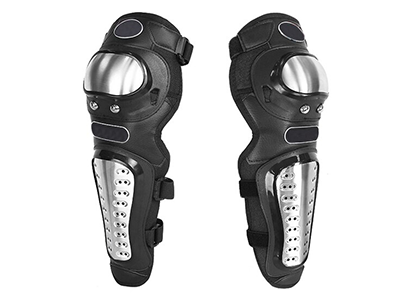
If you’re going to be working with tools, it’s important to protect your elbows from cuts and scrapes. Elbow pads can help to cushion your joints and absorb impact, keeping you safe as you work.
44. Shoulder pads

If you are in the market for a new set of shoulder pads, you will want to consider the essential tools for a toolbox. These are the items that you will need to have on hand in order to make the most of your new pads.
First, you will need a set of Allen wrenches. These will be used to tighten and loosen the bolts on your pads.
Next, you will need a set of pliers. These will be used to help you remove the old pads from your toolbox and to install the new ones.
Finally, you will need a set of screwdrivers. These will be used to help you install the new pads onto your toolbox.
With these essential tools, you will be able to easily install your new shoulder pads and keep them in good working order.
45. Back support
If you work with tools regularly, you know that having the right tool for the job is important. But what’s even more important is having the right tool for your back.
Back support tools are designed to help you avoid injuries while working with tools. They can provide support and stability while you’re using tools, and they can help you stay comfortable while you’re working.
46. Mouth guard
A well-stocked toolbox is a must for any serious do-it-yourselfer, and a mouth guard is an essential part of that toolbox. Here are the basics of what you need to know about mouth guards to keep your teeth and gums safe while you work.
There are two main types of mouth guards: over-the-counter and custom-fitted. Over-the-counter mouth guards are less expensive and easier to find, but they don’t offer the same level of protection as custom-fitted mouth guards. Custom-fitted mouth guards are made from impressions of your teeth, so they fit snugly and offer the best possible protection.
Mouth guards are made from different materials, including latex, silicone, and vinyl. Latex is the most common material, but it can cause allergies in some people. Silicone and vinyl are more expensive, but they’re hypoallergenic and offer a more comfortable fit.
When you’re choosing a mouth guard, be sure to pick one that’s the right size for your mouth. Mouth guards come in different sizes, so it’s important to try them on to make sure they fit properly.
47. Protective Clothing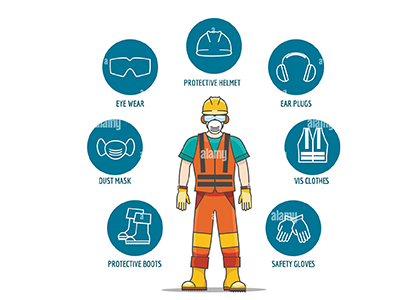
When it comes to choosing the right tools for your toolbox, there are a few things you need to keep in mind. First, you need to make sure that you have the right tools for the job. Second, you need to make sure that you have the right protective clothing for the job.
There are a few essential items that you should always have in your toolbox, regardless of the job. These include a hammer, a screwdriver, a set of wrenches, and a pair of pliers. If you are working with power tools, you will also need to have a set of safety goggles and a dust mask.
When it comes to choosing the right protective clothing, there are a few things you need to keep in mind. First, you need to make sure that the clothing is comfortable. Second, you need to make sure that it is durable. Third, you need to make sure that it is breathable. Fourth, you need to make sure that it is washable.
48. Eye protection
When it comes to your toolbox, one of the most important things you can do is make sure you have the right kind of eye protection. Whether you’re doing a simple repair or working on a complex project, it’s important to keep your eyes safe from potential harm.
There are a few different types of eye protection that you can use, depending on the task at hand. For example, if you’re working with power tools, you’ll want to make sure you have a pair of safety goggles to protect your eyes from flying debris.
If you’re working with chemicals, you’ll want to use a face shield to protect your eyes and face from any splashes. And if you’re working in a dusty environment, you may want to use a dust mask to keep your lungs and eyes safe from the particles.
No matter what type of eye protection you choose, make sure it fits properly and is comfortable to wear. You don’t want to be distracted by an ill-fitting pair of goggles or a face shield that keeps slipping down.
And finally, always make sure your eye protection is clean and free of any scratches or damage. You don’t want to take any chances when it comes to your eyesight.
By following these simple tips, you can help keep your eyes safe while you work on your next project.
49. Ear protection
If you work with tools, you need to protect your hearing. Exposure to loud noise can cause permanent damage to your ears, and it’s important to take steps to avoid this. Wearing ear protection is the best way to protect your hearing, and there are a few different types of ear protection available.
Earplugs are the most basic form of ear protection. They’re small, inexpensive, and easy to use. You can find earplugs made of foam, silicone, or other materials, and they all work by blocking out noise.
Ear muffs are another option for ear protection. They’re larger than earplugs and cover your entire ear. Ear muffs can be more comfortable than earplugs, and they’re also more effective at blocking out noise.
There are also electronic ear muffs available. These muffs have speakers built in, so you can still hear what’s going on around you, but the noise is filtered and reduced. These can be helpful if you need to be able to hear warnings or other sounds while you’re working.
When you’re choosing ear protection, it’s important to find something that’s comfortable and effective. You might need to try a few different types before you find the right fit. And remember, you should always wear ear protection when you’re using tools.
50. Respirator
When it comes to finding the right respirator for your needs, there are a few essential tools that you will need in order to make the right choice. Here are some of the most important things to keep in mind when shopping for a respirator:
- Make sure that the respirator is NIOSH approved.
- Make sure that the respirator fits snugly and comfortably on your face.
- Make sure that the respirator has the proper filters for the job you will be doing.
- Make sure that the respirator is easy to use and maintain.
- Make sure that the respirator is durable and will last for many years.
If you keep these things in mind, you should be able to find the perfect respirator for your needs.
Things To Consider Essential Tools For Toolbox

When creating an essential toolbox, there are several things to consider. First, you will need to decide what tools are essential for your needs. For example, if you are a carpenter, you will need different tools than if you are a mechanic. Second, you need to determine how many of each tool you will need. You don’t want to have too many or too few of any one tool. Finally, you need to make sure that the tools you select are of good quality and will last.
Portability
One of the most important factors to consider when purchasing a toolbox is portability. If you plan on moving your tools from one location to another often, or if you simply don’t have a lot of space to work with, a portable toolbox is a must. Look for a toolbox with wheels and a handle for easy transport.
Organization
Another important consideration is organization. A toolbox with plenty of compartments and drawers will help you keep your tools sorted and easy to find. This is especially important if you have a lot of tools.
Quality
Of course, you’ll also want to make sure you’re getting a quality toolbox. Look for a toolbox made from durable materials like steel or aluminum. Avoid plastic toolboxes if possible, as they are more likely to break.
FAQ – People Also Ask
1. What are the essential tools for a toolbox?
A toolbox should ideally contain a hammer, screwdriver, pliers, wrench, and a set of Allen keys.
2. How do I choose the right tool for the job?
The best way to choose the right tool for the job is to first assess what the job entails. Once you know what needs to be done, you can select the appropriate tool.
3. How do I care for my tools?
It is important to care for your tools to ensure their longevity. Always clean your tools after use and store them in a dry, safe place.
4. How often should I replace my tools?
You should replace your tools as needed. If a tool is damaged or worn, it is best to replace it.
5. What are the consequences of using the wrong tool for the job?
Using the wrong tool for the job can result in damage to the object you are working on, as well as to the tool itself. It is important to use the right tool to avoid any accidents.
Final Word
There is no one-size-fits-all answer to this question, as the Essential Tools For Toolbox will vary depending on the specific needs of the individual. However, some essential tools that would typically be found in a toolbox include a hammer, screwdrivers, a drill, a saw, a level, a tape measure, and pliers.

